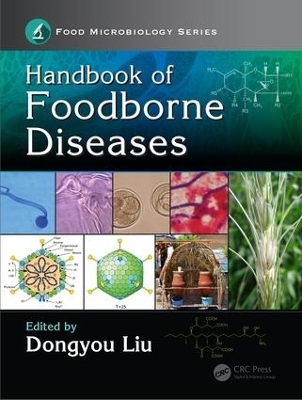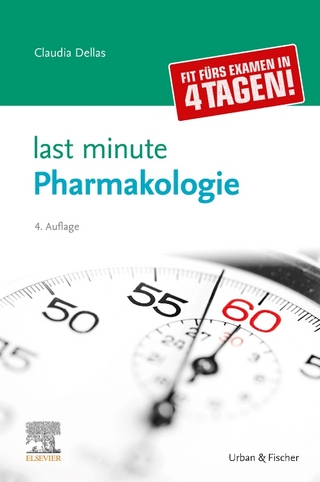
Handbook of Foodborne Diseases
CRC Press (Verlag)
978-1-138-03630-7 (ISBN)
Clearly linked to consumption of foods, beverages, and drinking water that contain pathogenic microbes, toxins, or other toxic agents, foodborne diseases have undergone a remarkable change of fortune in recent decades, from once rare and insignificant malaises to headline-grabbing and deadly outbreaks. Unquestionably, several factors have combined to make this happen. These include a prevailing demand for the convenience of ready-to-eat or heat-and-eat manufactured food products that allow ready entry and survival of some robust, temperature-insensitive microorganisms; a drastic reduction in the costs of air, sea, and road transportation that has taken some pathogenic microorganisms to where they were absent previously; an expanding world population that has stretched the boundary of human activity; and an ageing population whose weakened immune functions provide a fertile ground for opportunistic pathogens to invade and thrive.
Given the diversity of causative agents (ranging from viruses, bacteria, yeasts, filamentous fungi, protozoa, helminthes, toxins, to toxic agents), and the ingenuity of pathogenic microbes to evolve through genetic reassortment, horizontal gene transfer, and/or random genetic mutation, it has become an enormous challenge to understand how foodborne agents are able to evade host immune defenses and induce diseases, and also to develop and apply innovative approaches for improved diagnosis, treatment, and prevention of foodborne diseases.
Handbook of Foodborne Diseases summarizes the latest findings on more than 100 foodborne diseases and their causative agents. With contributions from international experts on foodborne pathogens, toxins, and toxic agents research, this volume provides state-of-the-art overviews on foodborne diseases in relation to their etiology, biology, epidemiology, clinical presentation, pathogenesis, diagnosis, treatment, and prevention. Apart from offering a comprehensive textbook for undergraduate and postgraduate students in food, medical, and veterinary microbiology, this volume constitutes a valuable reference on foodborne diseases for medical professionals and health authorities, and forms an informative educational resource for the general public.
Dongyou Liu, Ph.D., undertook veterinary science education at Hunan Agricultural University, China, and postgraduate training at Melbourne University, Australia. Over the past two decades, he has worked at several research and clinical laboratories in Australia and the United States of America, with focuses on molecular characterization and virulence determination of microbial pathogens (e.g., ovine footrot bacterium, dermatophyte fungi and foodborne listeria) and more recently on the development of nucleic acid-based quality assurance models for security sensitive and emerging viral pathogens. He is the primary author of > 50 original research and review articles in peer-reviewed international journals, the contributor of 176 book chapters, and the editor of a number of books including: Molecular Detection of Foodborne Pathogens (2009), Molecular Detection of Human Viral Pathogens (2010), Molecular Detection of Human Bacterial Pathogens (2011), Molecular Detection of Human Fungal Pathogens (2011), Molecular Detection of Human Parasitic Pathogens (2012), and Laboratory Models for Foodborne Infections (2017).
Introductory remarks. Foodborne diseases due to viruses. Adenovirus. Astrovirus. Enterovirus. Hantavirus. Hepatovirus (HAV). Kobuvirus (Aichi virus). Orthohepevirus (HEV). Norovirus. Rotavirus. Sapovirus. Torovirus. Prion. Foodborne diseases due to bacteria. Gram-positive bacteria. Bacillus (including cereulide and enterotoxins). Clostridium (including botulinum toxin). Enterococcus. Listeria. Mycobacterium. Staphylococcus (including toxins). Streptococcus (including toxins). Gram-negative bacteria. Aeromonas. Arcobacter. Brucella. Burkholderia. Campylobacter. Cronobacter. Enterobacter. Escherichia. Helicobacter. Plesiomonas. Proteus. Pseudomonas. Salmonella. Serratia. Shigella (including shiga toxin). Vibrio. Yersinia. Foodborne diseases due to fungi. Aureobasidium. Candida. Encephalitozoon. Enterocytzoon. Mucor. Foodborne diseases due to parasites Protozoa. Balantidium. Blastocystis. Cryptosporidium. Cyclospora. Dientamoeba. Entamoeba. Giardia. Isospora. Sarcocystis. Toxoplasma. Tryponosoma. Helminths. Angiostrongylus. Anisakis. Clonorchis. Diphyllobothrium. Diplogonoporus. Echinococcus. Echinostomes. Fasciola. Fasciolopsis. Gnathostoma. Haplorchis. Heterophyes. Hymenolepis. Metagonimus. Metorchis. Opisthorchis. Paragonimus. Spirometra. Taenia. Trichinella. Foodborne diseases due to toxins. Microbial toxins. Aflatoxins. Ergot alkaloids. Fumonisins. 3-Nitropropionic acid (3-NPA). Ochratoxins. Patulin. Ptomaine. Trichothecenes. Zearalenone. Seafood toxins. Brevetoxin. Ciguatoxin. Clupeotoxin. Domoic acid. Saxitoxins. Scombrotoxin. Tetrodotoxins. Plant toxins. Grayanotoxin. Mushroom toxins. Myristicin. Phytohaemagglutinin. Picrotoxin. Pyrrolizidine alkaloids. Saponins. Solanine. Taxine. Environmental toxins. Agricultural chemicals (e.g., dioxins, organophosphate). Chemicals from utensils and other sources (e.g., copper, zinc, lead, cadmium, mercury). Food additives.
| Erscheinungsdatum | 10.10.2018 |
|---|---|
| Reihe/Serie | Food Microbiology |
| Zusatzinfo | 133 Tables, black and white; 69 Illustrations, color; 130 Illustrations, black and white |
| Verlagsort | London |
| Sprache | englisch |
| Maße | 210 x 280 mm |
| Gewicht | 2728 g |
| Themenwelt | Studium ► 2. Studienabschnitt (Klinik) ► Pharmakologie / Toxikologie |
| Studium ► Querschnittsbereiche ► Infektiologie / Immunologie | |
| Naturwissenschaften ► Biologie ► Genetik / Molekularbiologie | |
| Technik ► Lebensmitteltechnologie | |
| ISBN-10 | 1-138-03630-7 / 1138036307 |
| ISBN-13 | 978-1-138-03630-7 / 9781138036307 |
| Zustand | Neuware |
| Haben Sie eine Frage zum Produkt? |
aus dem Bereich


